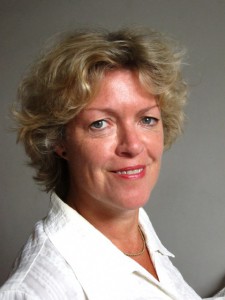They say sometimes you feel an emotion so intense, words can’t describe it — this is especially true when talking about matters of the heart.

Until March 15, the Old Port’s Phi Centre will be showing Hybrid Bodies, an exhibition that delves into the culture, emotions, and psychology of the post-heart transplant experience and recovery. The works range from recorded interviews and projections to prints and a soapy surprise in the bathroom.
Through the works of four contemporary artists working in a variety of mediums, the exhibition goes beyond the material surgical procedure of the heart transplant. Instead, the exhibition explores the hidden meanings, contradictions and disorientations that arise from having the heart of a stranger inside your body. The artists were invited by the interdisciplinary academic research team, the Process of Incorporating a Transplanted Heart (PITH), to produce works based on a series of video interviews with transplant recipients.
Heart transplants are not commonplace, yet the field is medically and technically quite robust. There is however very little work done on the existential issues related to the transplant. In the PITH interviews, most recipients expressed significant distress when discussing issues such as the donor and their gift of life, as well as a disrupted sense of bodily integrity and identity that could only be appreciated by other heart recipients.
One of the featured artists is Ingrid Bachmann. The internationally exhibiting multidisciplinary artist is the founder of the in everyday life art-lab, co-editor of Material Matters and a Concordia University professor of Studio Arts.
“It seemed like there was such a gap between what people were saying and what their body language was saying. People would say ‘I’m great, super great.’ So if you have a written transcript of that you think ‘oh they’re great.’ But their body language would be ‘oh … I’m great … ,’ sort of huddled over. There was this gap. I took what I thought were the main themes that came out of that,” Bachmann said on her involvement in Hybrid Bodies.

Bachmann’s artwork at the exhibition deals primarily with the many contradictions and disconnects of heart transplantation through the themes of gifting, kinship, and boundaries. Bachmann’s art generally deals with the extraordinary and impossible that exists in the everyday. Working with a range of mediums, her interest lies in the unseen and the smoke and mirrors of the world around us.
Her Hybrid Bodies exhibit, “The Gift,” entails a series of recorded dance performance pieces that deal with the theme of gifting that arose during many of the interviews.
“One is the idea of the gift, a real gift that is something that makes you happy and changes your life,”explained Bachmann.“The other is the notion of gift as a weight or a burden. How could you ever repay it? The last is a real form of reciprocity between two [people]. The notion of the gift is also used in promoting people for organ donation. It’s called giving the gift of life [yet] when recipients receive it, they’re told well, it’s a pump. A machine.”
On a physiological level, their life has been significantly altered, as simple everyday acts of walking and sitting down can be quite exhausting.
“I learned a lot of pragmatic things that are really good. Most galleries are set up for able-bodied people … they’re often difficult to get to,” said Bachmann.
Her point highlights how understanding post-operative life is as much an experiential and emotional issue as it is a medical issue.
Recipients will often think about their donor families. Patients may wonder about the person whose heart they have inherited and what the person was like.
“There is the sense of the body being changed a bit. It’s nothing like the sci-fi horror movie of being taken over by another personality [yet] some people have the sense of an intruder,” said Bachmann. This leads to a re-conceptualization of the notion of kinship, as suddenly you have this intimate, material, or even spiritual connection with a stranger. Similarly many transplant recipients experience a sense of disorientation with their bodies as they negotiate what is part of them and what is not, and when their body ends and begins as the body becomes understood as this porous and changing entity.
Through these different inquiries into listening and teasing out the hidden contradictory and ambiguous insights on the heart, their research brings to light unspoken and unseen experiences.
This is not only a work in improving post-operative life but also a work in empathy.
“It puts these ideas out in the public realm in a different way [. . .] Scientists have a very different process. They work in a quantitative way while we work in a qualitative way,” explained Bachmann.
Shedding light and understanding these shared but unspoken experiences can be a very humanizing process.
“We put it [our work] out as propositions and hope that this exhibition functions more as an artifact for some of these ideas and concerns to be discussed in a different way,” said Bachmann.
The Hybrid Bodies exhibit will run until March 15 at the Phi Centre.



